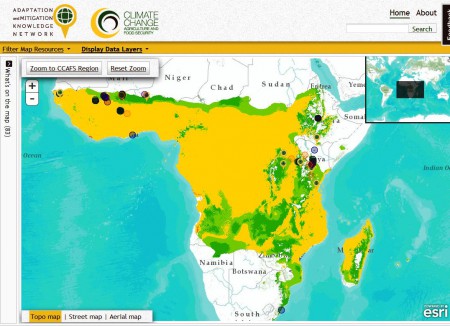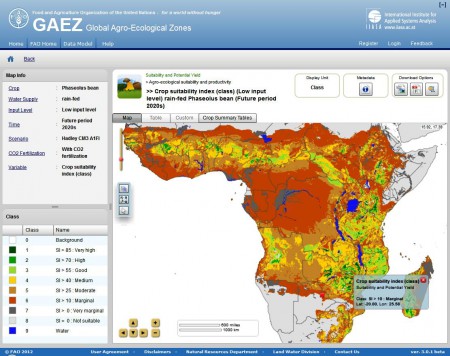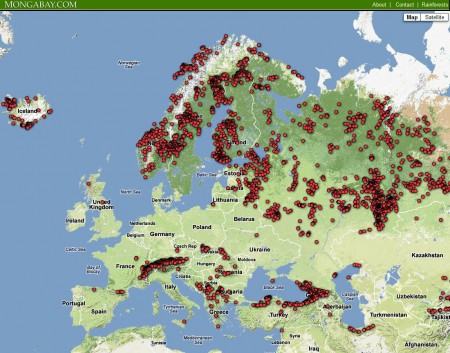- Maize diversity sliced and diced to within an inch of its life.
- Mapping invasives sometimes = mapping crop wild relatives. Compare and contrast.
- Red List hits 20,000 species.
- And yet we keep finding new ones, even in Europe.
- Reconstructing a Korean dog breed.
- You too can help IUCN with its genebank guidelines.
- Video history of ginkgos. “Are we watching them as they evolve, or are they watching us?”
- Video history of Navajo sheep. Touching.
- Malaysian forest tree genebank at work. Any ginkgos in it?
- Hurry! You have 2 days to apply for a Training course on Food Systems: From Agronomy to Human Health, in Benin.
Agricultural biodiversity and population in Laos
Normally, I would elegantly link some trenchant comments on the Agrobiodiversity Initiative in the Lao PDR (TABI), whose website has recently been pointed out to us, 1 to the equally recent release of the AsiaPop dataset. But Lao PDR is, annoyingly, not (yet?) one of the countries for which AsiaPop has spatial population data. Which is a pity because TABI does have some interesting-looking maps on its study sites as well as a rather more forbidding, though no doubt extremely useful, online metadata platform.
Failing that, I’ll just leave you with TABI’s own description of TABI:
TABI is a long term commitment by the Lao Government and the Swiss Agency for Development and Cooperation (SDC) which seeks to conserve, enhance and manage the biological diversity found in farming landscapes in order to improve the livelihoods of upland farm families in northern Laos. During its first phase (2009-2012) TABI is geographically focusing on Luang Prabang and Xieng Khouang Provinces in the north of Laos.
Global system for monitoring vegetation disturbance launched
The redoubtable Mongabay.com has just announced the beta version of the Global Forest Disturbance Alert System (GloF-DAS). How it works is that four times a year (at the end of March, June, September and December) the CASA ecosystem modeling team at the NASA Ames Research Center produce something called the “Quarterly Indicator of Cover Change” (QUICC). This compares global vegetation index images from NASA’s Moderate Resolution Imaging Spectroradiometer (MODIS) from exactly a year before with the ones they just got. GloF-DAS then takes the QUICC data and maps the location of forest disturbance as the center points of 5×5 km areas where there was a >40% loss of forest greenness cover over the previous 12 months.
Here’s the result for Europe, for the year period ending March 2012.
There’s some issue I’d take with this approach. Most importantly, comparing March with March is not necessarily comparing vegetation at the same level of seasonal development in the temperate zone. But I think this is a great step forward in developing a global system for monitoring threats of genetic erosion. As the developers point out:
The cause(s) of any forest disturbance point detected in this map has yet to be confirmed.
Disturbance locations and impacts are subject to verification through local observations.
So imagine a next iteration of the system where local observers can annotate some of those potential disturbance points. A bit like what happens in the National Phenology Network in the USA, though for a different purpose. 2 And information will flow out more freely too.
In coming months, GloF-DAS will offer an alert system whereby users can sign up to get notifications via email or SMS text message on recent changes in forest cover for a specified location or country.
Of course, for this to be truly a game-changer we who are interested in monitoring threats to crop wild relatives, say, would need the ability to combine the potential threat data of GloF-DAS with our own data on species occurrence or diversity. It doesn’t look to me like that’s possible just now, but perhaps it is something that we as a community can suggest to the developers.
A roadmap to better mapping
Geographers and cartographers often use 2-3 three different software packages for data analysis: they will probably never settle around one tool, online at that, and create a ‘community’ of users there. Instead, the NGOs interested in such a tool should rather offer geo-info advice and look at light open-source GIS software to distribute: how many development workers in the field have had difficulties with the (basic) tabular conversions associated with GPS data? Many many me thinks.
That’s Cédric Jeanneret-Grosjean on online mapping resources. What he’s saying is that they, er, should not be online. Bold. Very bold. But a model that has in fact been followed, at least for the spatial analysis of biodiversity, agricultural and otherwise. And with some success. Maybe time for the crop distribution modellers to try it?
Let’s remember this is important. We’re not just arguing about how to make prettier maps. Identifying what constraints are going to be most significant, when, where in the world, for each crop, is going to be crucial in setting breeding agendas for the next 20 years and more. Breeders need to be able to explore and interrogate these future suitability maps, and explain what they get out of them to their bosses and the policy-makers above them. It’s important to make them as accessible and easy to use as possible. What we have at the moment is not fit for purpose.
Still waiting for a decent way to map change in climate suitability
There seems — inevitably — to be something of a competition out there to produce maps of changes in climatic suitability for different crops. And I’m not saying that’s necessarily a bad thing. The recent launch of FAO’s GAEZ Data Portal gives us a much-needed alternative to the all-but-unusable offering by CCAFS. Sad to say, it is not much of an alternative.
Here’s the quick version. CCAFS’s Adaptation and Mitigation Knowledge Network allows you to map current suitability, future suitability and change in suitability for a few crops. The example below is change of suitability for Phaseolus beans in Africa. I wasn’t able to get rid of those extraneous place markers, nor to export the results other than by screengrab, nor to import my own data to super-impose, nor to include the legend in any sensible way.

FAO tries to fill the gaping hole left by this well-meaning but flawed tool by providing something that: has menus which are extremely cumbersome to navigate; does not include change in suitability, but then doesn’t let you combine present and future suitability to do your own analysis; does allow you to choose different climate models, but again not to combine the results; does allow various download options, none of them particularly useful, and then only if you register; and, needless to say, doesn’t allow you to import data.

It’s hard to say how one could better replicate, and in fact accentuate, the bad features of one tool, while ignoring whatever good things it had. Frankly, I’m running out of patience with websites which are clearly designed by one set of geeks for another set of geeks. Meanwhile, users — you know, the people for whom this stuff is allegedly produced — are left to cry over their keyboards, and think of what might have been. And regret the fact that they’ll never get back the hour they’ve just wasted.
